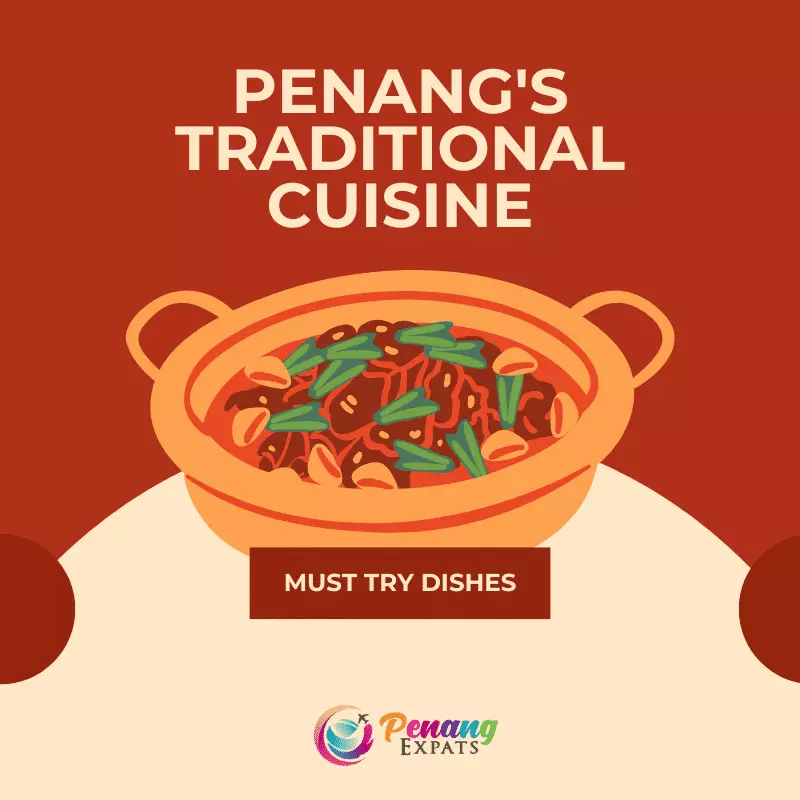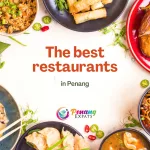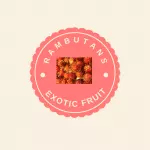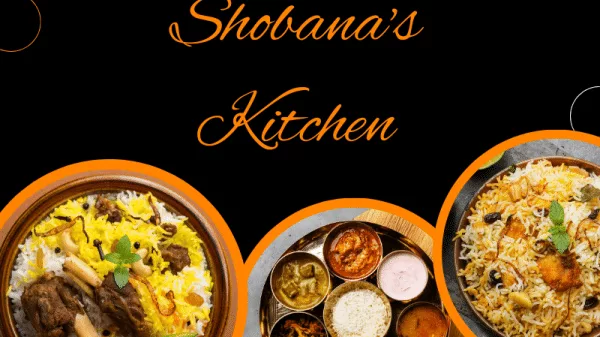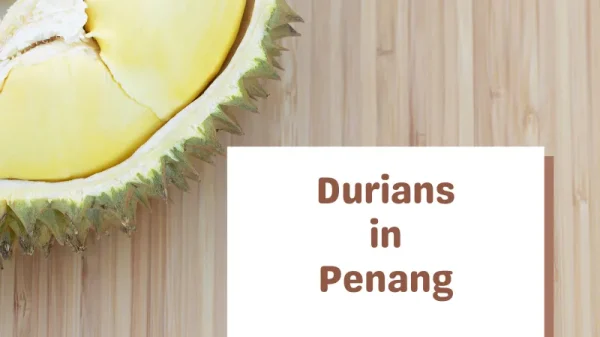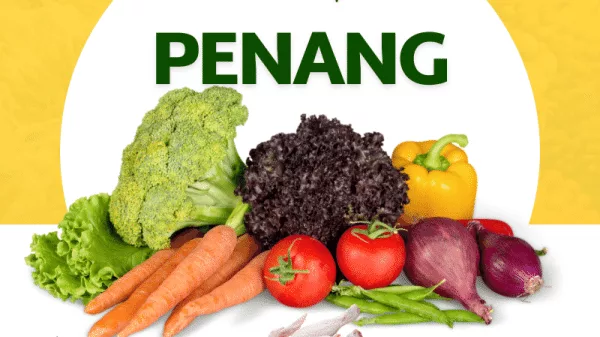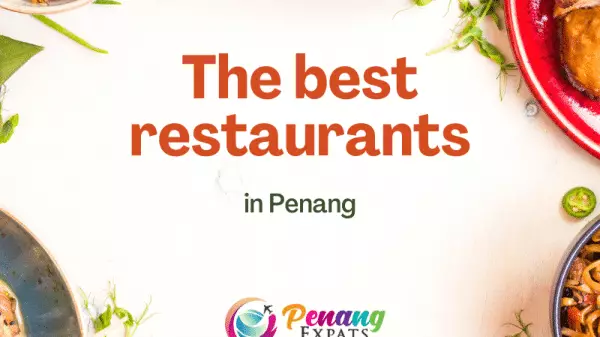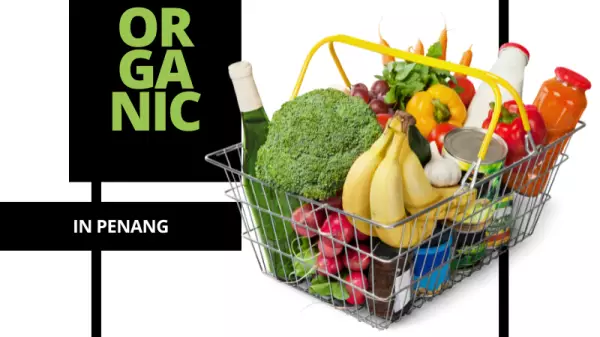Overview of Penang’s Traditional Cuisine
Penang’s traditional cuisine is especially famous, with hawkers selling a wide variety of dishes that are both affordable and tasty. Some of the must-try dishes in Penang include Nasi Kandar, Assam Laksa, Char Koay Teow, Hokkien Mee, and Nyonya Kuih. These traditional cuisines are a reflection of the diverse cultural influences on Penang’s cuisine, and they each have their own unique flavours and ingredients.
Visitors to Penang should make it a point to try as many traditional dishes as possible to truly experience the local culture. The vibrant food scene in Penang is constantly evolving, with new and exciting dishes being introduced all the time. From street food to fine dining, Penang has something to offer for every food lover.
Nasi Kandar: A Penang Staple
Nasi Kandar is a Malaysian dish that originated in Penang in the early 19th century. It is a meal that consists of steamed rice served with a variety of curries and side dishes. The dish’s name comes from the Malay words “nasi” (rice) and “kandar” (pole), as it was traditionally sold by street vendors who carried the food on a pole (kandar) over their shoulders.
Today, Nasi Kandar is a staple in Penang’s culinary scene, and you can find it in many hawker centres and street food stalls. The dish’s popularity has even led to the opening of many Nasi Kandar restaurants throughout Malaysia and beyond.
History and Significance of Nasi Kandar in Penang
Nasi Kandar’s origins can be traced back to the early 19th century when Indian Muslim traders from Tamil Nadu settled in Penang. These traders set up food stalls to cater to the Indian Muslim community and began selling rice and curries, including the popular biryani dish. Over time, they started offering a cheaper version of the biryani, which consisted of plain rice served with a variety of curries and side dishes.
As the dish gained popularity, the street vendors began carrying the food on a pole to sell it to the dockworkers and labourers who worked in the area. The dish’s popularity continued to grow, and it became a staple in Penang’s culinary scene.
Must-Try Nasi Kandar Dishes
There are many different varieties of Nasi Kandar, but some of the must-try dishes include:
- Chicken or beef curry
- Fried chicken
- Fried fish
- Okra curry
- Spicy prawn curry
- Beef rendang
These curries are usually served with steamed rice, and you can add additional side dishes such as fried egg, cucumber, and papadum to complete the meal.
Some of the other dishes include:
- Ayam Ros (chicken cooked in a tomato-based curry)
- Daging Kicap (beef cooked in a soy sauce-based gravy)
- Sambal Udang (prawns cooked in a spicy sauce)
- Sayur Campur (mixed vegetables cooked in a curry)
- Telur Dadar (thin omelette served with a spicy sauce)
Assam Laksa: A spicy and sour delight
What is Assam Laksa?
Assam Laksa is a sour and spicy fish-based soup that is a popular dish in Penang. The soup is made with tamarind, lemongrass, galangal, chilli, and other spices, which give it its unique and complex flavour. The fish used in Assam Laksa is usually mackerel, which is boiled and then shredded to give the soup its texture.
History and significance of Assam Laksa in Penang
Assam Laksa is considered one of the signature dishes of Penang, and it has a long and rich history in the region. The dish is believed to have originated with the Peranakan community, who settled in Penang and blended Chinese, Malay, and other culinary traditions to create a unique cuisine. Today, Assam Laksa is a beloved dish that is enjoyed by locals and visitors alike, and it is an important part of Penang’s culinary heritage.
Must-try Assam Laksa dishes
If you’re looking to try Assam Laksa in Penang, there are a few places that are known for serving up the best versions of the dish. One popular spot is the Pasar Air Itam Laksa stall, which has been serving up Assam Laksa for over 60 years. Another great option is the Joo Hooi Cafe, which is known for its flavorful and authentic Assam Laksa.
To experience the full range of flavours in Assam Laksa, it’s important to try it with all the traditional toppings, which include cucumber, onion, pineapple, and mint. The dish is usually served with a spoonful of shrimp paste, which adds an extra layer of umami flavor.
Here are some of the best places to try Assam Laksa in Penang:
- Penang Road Famous Laksa: This is one of the most famous places to try Assam Laksa in Penang. The flavorful broth is made with mackerel, tamarind, and lemongrass, and is served with rice noodles, cucumber, onions, and mint leaves.
- Joo Hooi Cafe: Another popular spot for Assam Laksa, Joo Hooi Cafe serves a slightly sweeter version of the dish. The broth is made with mackerel, tamarind, and torch ginger flower, and is served with rice noodles, sliced onions, and mint leaves.
- Kim Laksa: This hidden gem is located in a residential area and is known for its rich and creamy Assam Laksa broth. The dish is served with thick rice noodles, sliced onions, and mint leaves.
- Ayer Itam Laksa: This roadside stall is located near the Kek Lok Si Temple and is a popular spot for locals. The Assam Laksa broth is made with mackerel, tamarind, and galangal, and is served with rice noodles, cucumber, onions, and mint leaves.
Make sure to add these places to your foodie itinerary when in Penang to experience the best of Assam Laksa.
Char Koay Teow: A stir-fried favourite
Char Koay Teow is a popular street food in Penang that has a long-standing history. It is a dish made of flat rice noodles stir-fried with shrimp, cockles, bean sprouts, and Chinese chives in a dark soy sauce. The dish is cooked over high heat with pork lard, which gives it a smoky flavour and aroma.
What is Char Koay Teow?
Char Koay Teow is a Cantonese word that means “stir-fried rice cake strips.” The dish is a favourite among locals and tourists alike and is known for its rich flavour and texture. The dish is made with flat rice noodles, which are stir-fried with an assortment of ingredients, including shrimp, cockles, bean sprouts, eggs, and Chinese chives.
History and Significance of Char Koay Teow in Penang
Char Koay Teow is said to have originated from the Chinese labourers who migrated to Southeast Asia, including Malaya, Singapore, and Indonesia, in the 19th century. These labourers used to sell the dish as a cheap and tasty meal to their fellow workers. Over time, the dish became popular among the locals and was eventually adopted as a Malaysian favourite.
Here are some of the best places to try Char Koay Teow in Penang:
- Siam Road Char Koay Teow – This humble stall located along Siam Road is said to serve some of the best Char Koay Teow in Penang. The noodles are stir-fried over charcoal fire, giving them a unique smoky flavor. The dish is served with fresh cockles, prawns, and Chinese sausage, and topped with crispy pork lard.
- Tiger Char Koay Teow – This roadside stall in Pulau Tikus is known for its spicy Char Koay Teow that is cooked to order. The noodles are stir-fried with prawns, Chinese sausage, and bean sprouts, and flavored with a homemade chili paste that gives the dish a fiery kick.
- Ah Leng Char Koay Teow – This popular stall in Air Itam is often crowded with locals and tourists alike, all eager to try their famous Char Koay Teow. The dish is stir-fried with fresh prawns, cockles, and Chinese sausage, and topped with crispy pork lard and a sprinkle of chives.
Whether you prefer your Char Koay Teow spicy or mild, with more seafood or more meat, there’s a version of this beloved Penang dish that is sure to satisfy your taste buds.
Hokkien Mee: A flavorful noodle dish
What is Hokkien Mee?
Hokkien Mee is a popular noodle dish in Penang that is made with thick yellow noodles, prawns, sliced pork, squid, fish cake, bean sprouts, and green vegetables. The dish is known for its rich, savory broth that is made by simmering pork bones, prawn heads, and dried shrimp for several hours. The broth is then combined with a mixture of soy sauce and dark soy sauce, giving it a deep brown colour and a complex flavour.
History and Significance of Hokkien Mee in Penang
Hokkien Mee is believed to have originated in the Hokkien-speaking region of China, where it was traditionally made with thin egg noodles and seafood. The dish was brought to Penang by Hokkien immigrants in the early 20th century and has since become a beloved local specialty.
If you’re in Penang, be sure to visit the following places:
- 888 Hokkien Mee: Located in a hawker centre in Lebuh Presgrave, this Hokkien Mee stall is famous for its rich, umami broth and crispy pork lard.
- Hokkien Mee at the New Lane Hawker Center: This bustling hawker centre in Georgetown is home to several Hokkien Mee stalls, each with its own unique twist on the classic dish.
Hokkien Mee is a must-try dish for anyone visiting Penang. Its rich, savoury broth and generous portions of seafood make it a satisfying and flavorful meal that is sure to leave you craving more. Be sure to try it at one of the city’s many hawker centres and stalls for an authentic taste of Penang’s culinary heritage.
Curry Mee: A spicy and creamy soup
What is Curry Mee?
Curry Mee is a spicy and creamy soup that is a staple in Penang’s culinary scene. It is made with a variety of ingredients, including coconut milk, chilli paste, and a mix of spices. The soup is typically served with noodles, tofu puffs, shrimp, cuttlefish, and cockles.
History and Significance of Curry Mee in Penang
Curry Mee has been a popular dish in Penang for generations. It is believed to have originated from the Indian-Muslim community in the area, who brought with them their own curry recipes. The dish was then adapted to include local ingredients, such as seafood and noodles.
If you’re looking to try Curry Mee in Penang, here are some places to check out:
- Hot Bowl Nyonya Delights – This restaurant is known for its delicious Curry Mee, which is served with generous portions of seafood and noodles.
- Kedai Kopi Sin Hwa – This popular hawker stall serves up a spicy and flavorful Curry Mee that is sure to satisfy your cravings.
- Kim Leng Loh Mee – While this restaurant is known for its Loh Mee, their Curry Mee is not to be missed. It is served with a rich and creamy broth, along with fresh seafood.
Whether you’re a fan of spicy food or simply looking to try something new, Curry Mee is a must-try dish when visiting Penang.
Nyonya Kuih: A sweet and colourful dessert
What is Nyonya Kuih?
Nyonya Kuih, also known as Kueh, is a type of traditional dessert that originated from the Peranakan culture, which is a fusion of Chinese and Malay cultures. These sweet treats are made with a variety of ingredients such as glutinous rice flour, coconut milk, pandan leaves, and palm sugar. They come in different shapes, colours, and textures, and are often served during special occasions such as weddings, festivals, and religious ceremonies.
History and Significance of Nyonya Kuih in Penang
Nyonya Kuih has a long history in Penang, and it is an integral part of the island’s culinary heritage. The tradition of making Nyonya Kuih was passed down from generation to generation among the Peranakan community, and it has become a symbol of their identity and culture. In Penang, Nyonya Kuih is often sold at local markets and street stalls, and it is a popular snack among locals and tourists alike.
Must-try Nyonya Kuih dishes:
- Kuih Lapis – This colourful layered cake is made with coconut milk, rice flour, and pandan leaves. It is often served during festive occasions and is a favourite among locals.
- Kuih Dadar – This sweet roll is made with pandan-flavoured crepes filled with grated coconut and palm sugar. It is a popular snack in Penang and is often sold at local markets and street stalls.
- Kuih Talam – This two-layered cake is made with a base layer of green pandan-flavoured rice flour and a top layer of white coconut milk and rice flour. It is a popular snack in Penang and is often served with a cup of hot tea.
- Ondeh Ondeh – These bite-sized balls are made with glutinous rice flour and filled with palm sugar, then coated in grated coconut. They are a popular snack in Penang and are often sold at local markets and street stalls.
Nyonya Kuih is a delicious and colourful dessert that is an essential part of Penang’s culinary heritage. If you’re visiting Penang, make sure to try some of these sweet treats and experience the unique flavours and textures of this traditional cuisine.
Final Thoughts on Penang’s Traditional Cuisine
Penang’s traditional cuisine is a must-try for anyone visiting this beautiful island. From the spicy and sour Assam Laksa to the flavorful Hokkien Mee, there is something for everyone’s taste buds. Don’t forget to indulge in the sweet and colorful Nyonya Kuih and the stir-fried favorite Char Koay Teow.
It’s not just about the food, but also about the history and culture behind it. Each dish has a story to tell and is an integral part of Penang’s culinary heritage. Nasi Kandar is a local staple and an experience that should not be missed.
Exploring Penang’s culinary scene is a journey of discovery, and these must-try dishes are just the beginning. So, make sure to immerse yourself in the local food culture and try out as many dishes as possible when you visit Penang.

